Building the future for Circular electronics
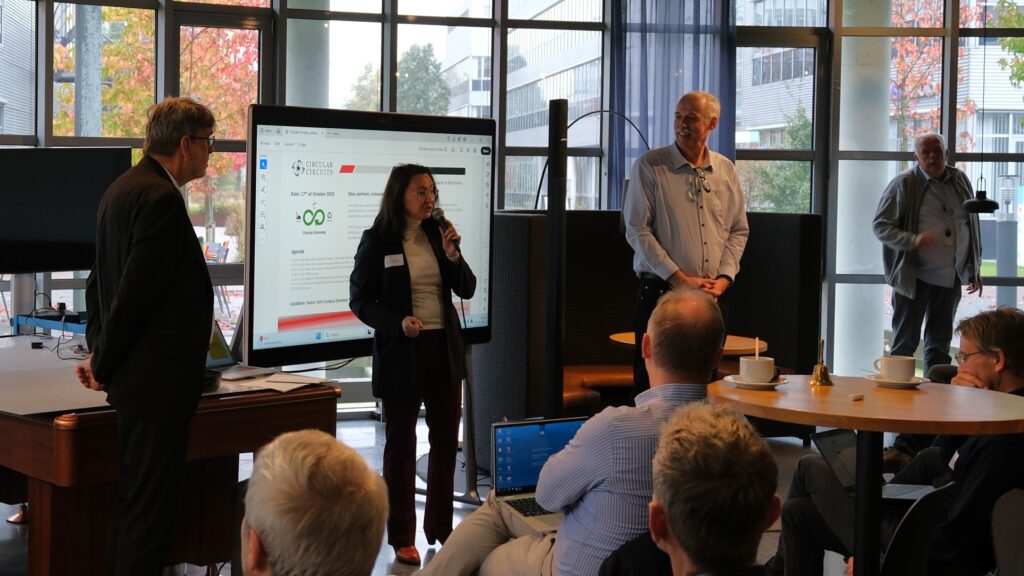
On 17 October 2025, researchers, policymakers, and industry representatives gathered at the Dutch Tech Campus in Zoetermeer for the Circular Circuits Outreach Event, a full-day programme dedicated to advancing circularity in the electronics sector. Hosted by the Reconext, supported by Dutch Tech Campus / Ping Properties, and co-organised with M2i, the event brought together more than 70 participants from government, academia, and business to share concrete pathways toward closing material loops in electronic products.
Setting the stage
In their opening remarks, Prof. Arnold Tukker (Leiden University), Jan-Henk Welink (TU Delft) and Dr. Yulia Fischer (M2i) welcomed participants to a dialogue between innovation and implementation. Fischer emphasised that the outreach event was not merely a showcase of Circular Circuit project results, but “a call to build lasting structures for circular manufacturing, across disciplines and across sectors.”
The day’s agenda reflected that ambition: beginning with the regulatory framework for extended producer responsibility (EPR), then moving through the technical, economic, and policy dimensions of reuse and remanufacturing.
Making policy for circular electronics
Arjen Brouwer from Rijkswaterstaat opened with an overview of the Extended Product Responsibility (EPR) rules for the Waste Electrical and Electronic Equipment (WEEE). He explained how Dutch and EU legislation now places clear responsibility on producers for financing and organising waste management. “EPR is one of the most powerful levers to make product chains more circular,” he said, pointing to the requirement that 65% of electronics placed on the market must be collected and processed responsibly. Brouwer also highlighted ongoing tensions: between collection targets and repair or reuse ambitions, and between circular goals and export restrictions.
His presentation can be found here: Presentation Arjen Brouwer
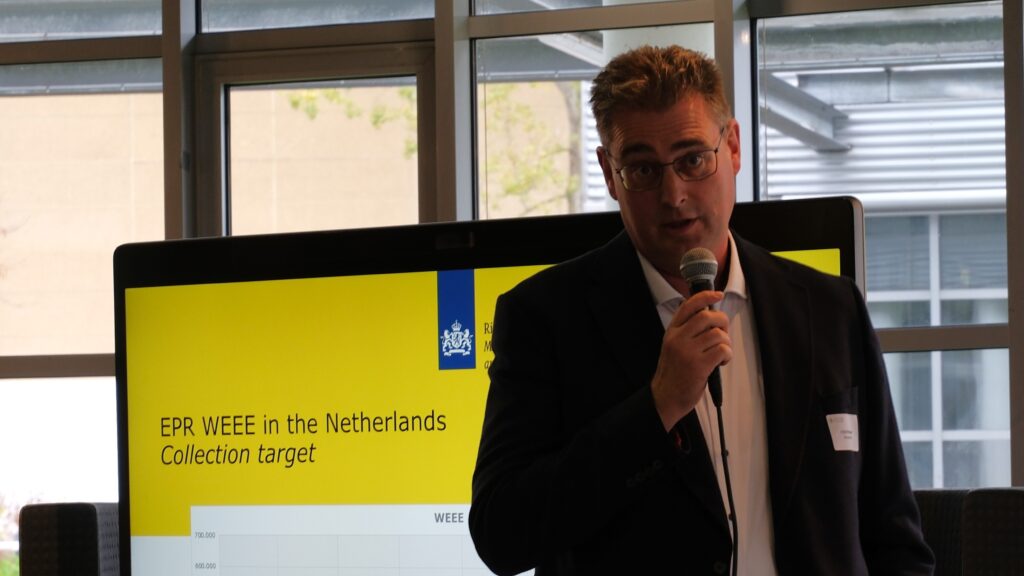
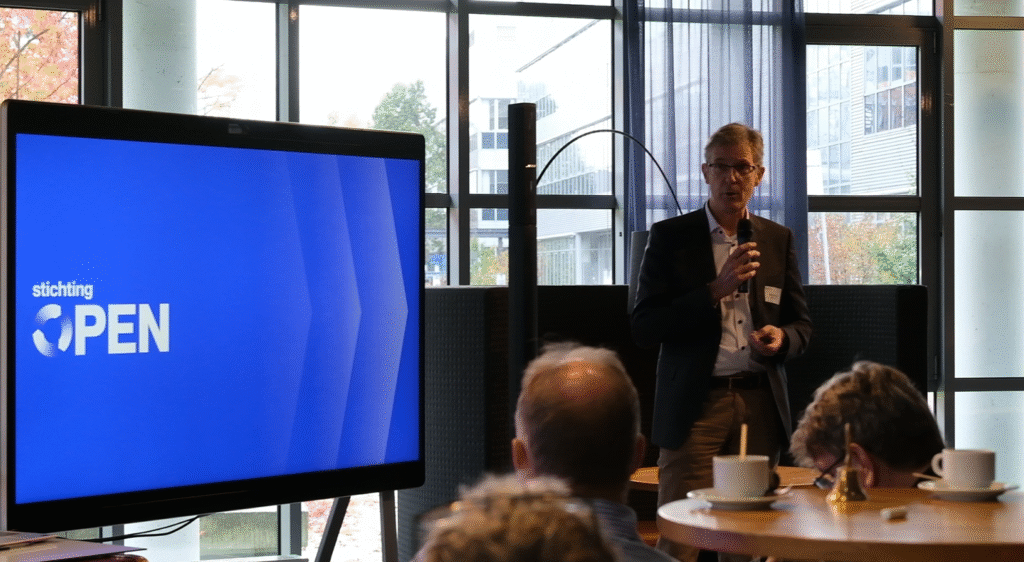
Following him, René Eijsbouts of the project partner Stichting OPEN quantified what those policies mean on the ground. The Netherlands’ so-called urban mine — the stock of electronics in use — holds enormous potential, he noted, but only a fraction is currently recovered. Despite a robust collection infrastructure, illegal trade and poor sorting still divert valuable materials away from certified recycling. Eijsbouts called for “an all-actors principle,” where enforcement, design, and industrial policy align. “We don’t need more policy papers on critical raw materials,” he said, “we need the industrial capacity to process them here in Europe.”
His presentation can be found here: Presentatie Rene Eijsbouts
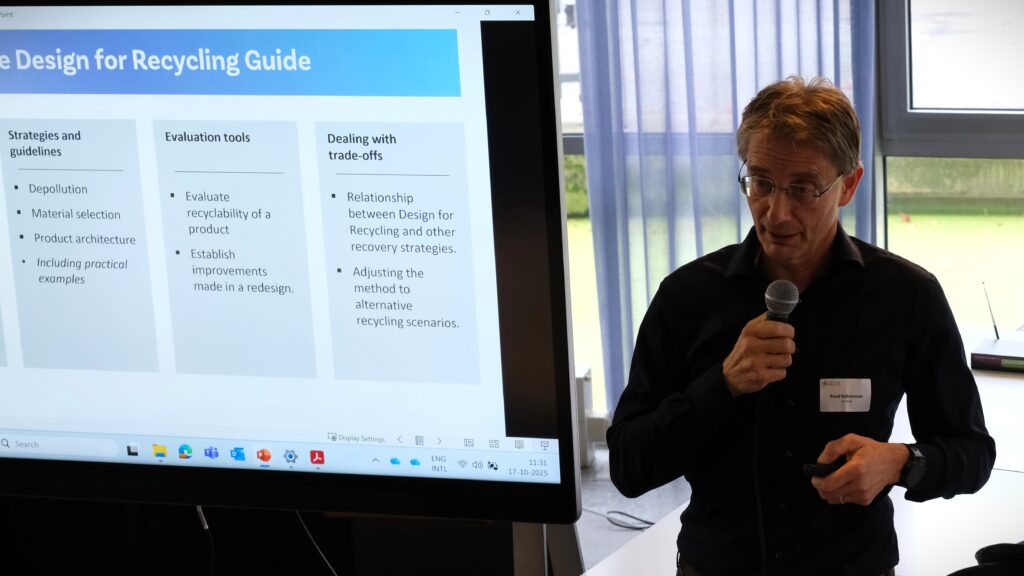
The focus then shifted from policy to product design. Prof. Ruud Balkenende (TU Delft) presented the latest results from Circular Circuits’ design research. His team has developed practical guidelines for Design for Repair and Design for Recycling, exploring how early design decisions affect recyclability and remanufacturing potential. Case studies ranged from consumer electronics to professional equipment, supported by TU Delft’s experimental work on disassembly maps, fastening systems, and shredding tests.
“The challenge,” Balkenende explained, “is not to choose between repair and recycling, but to design for both — to make products that can live more than one life.”
Next, Dr. Koen Dittrich from Rotterdam School of Management, Erasmus University translated these design insights into economic models. His presentation on business model innovation and closed-loop supply chains highlighted how contracts, incentives, and standards can either enable or hinder circular transitions. “Circularity doesn’t happen at the level of a single firm,” Dittrich stated. “It happens in ecosystems — where repairers, recyclers, and producers share data, risks, and returns.”
Using simulation models and case studies from the Dutch microelectronics ecosystem, his research showed that transparency, data exchange, and well-designed contractual relationships are key to recovering value efficiently at product end-of-life.
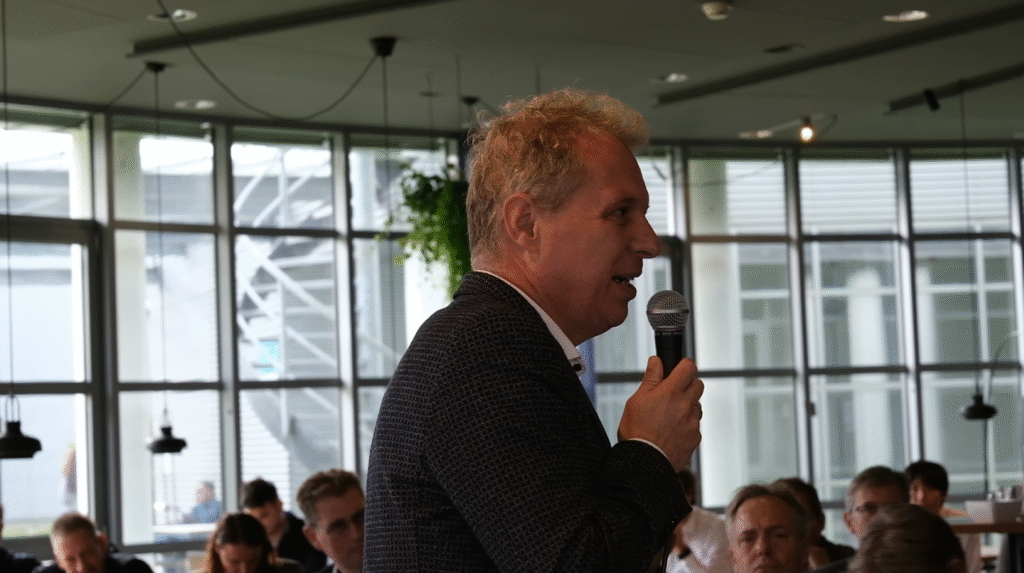
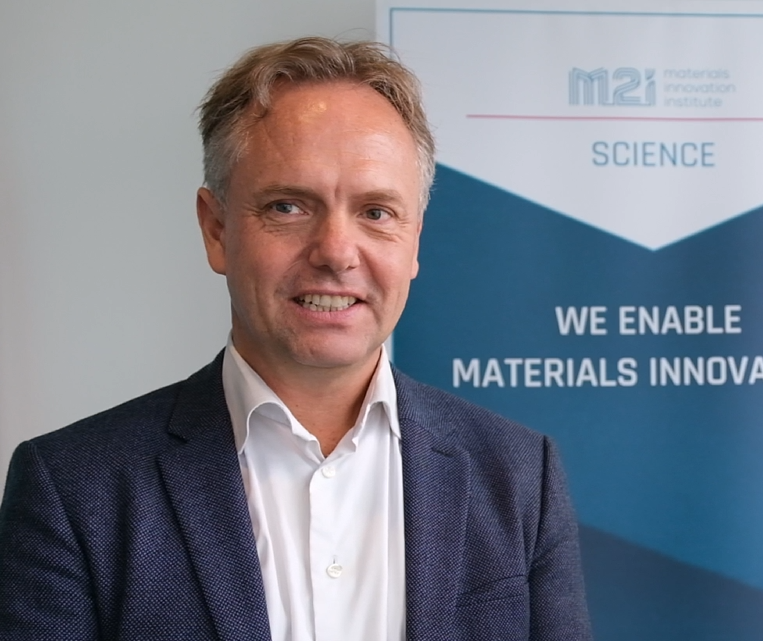
Practice and partnership
Industry perspective came from Olaf Koning, General Manager, and Hugo Wentzel, Global Account Manager of Reconext, one of the largest global service providers in electronic repair and refurbishment. Operating 22 sites worldwide and processing over 30 million items annually, Reconext supports nine of the world’s ten largest technology companies.
At its Zoetermeer site — where the event was held — 118 employees handle testing, grading, and refurbishment for diverse electronics, from IoT devices to network equipment. Koning described how feedback loops between Reconext and its clients are already influencing product design: “We can tell a manufacturer exactly which components fail, how often, and under what conditions. That’s where circular design starts — with real data from real products.”
He also announced an upcoming co-design project with Cisco and TU Delft, supported by the Circular Circuits programme, aimed at translating field data into new design-for-reuse principles.
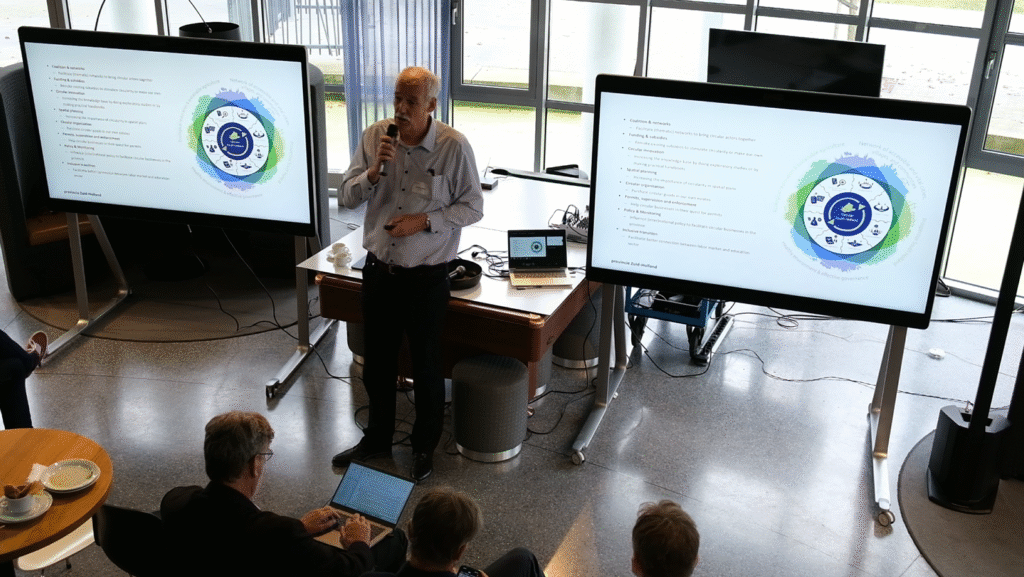
Policy alignment at the regional level
Bringing a regional governance view, Jan-Henk Welink on behalf of Pascal van Dam, Transition Manager for Circular Manufacturing at the Province of South Holland, discussed how provincial policy connects industrial ambition with spatial and economic planning. South Holland, he reminded the audience, contains around 30% of the Netherlands’ total material stock and has committed to becoming 50% circular by 2030 and fully circular by 2050.
The presentation of Pascal van Dam can be found here: Presentation Pascal van Dam
Welink outlined several instruments the province has launched to accelerate progress: from the Remanufacturing Collective and Circular Hubs to targeted business model vouchers. “Our role is to make it easier for companies to act,” he said. “Circular manufacturing should not be an exception; it should be the default option.”
From selling to connecting
The event concluded with the Remanufacturing Collectief, an initiative to scale remanufacturing practices across the Dutch manufacturing sector. The message by Rens Leerker was clear: the shift from selling and forgetting to selling and connecting is already underway. Remanufacturing offers a practical and profitable first step up the circularity ladder — preserving the highest value of products and the knowledge embedded in them.
Challenges remain, especially for small production series and specialised equipment, but collaboration across the ecosystem — from maintenance technicians to design engineers — is growing fast.
The presentation of Rens Leerker can be found here: Presentation Rens Leerker
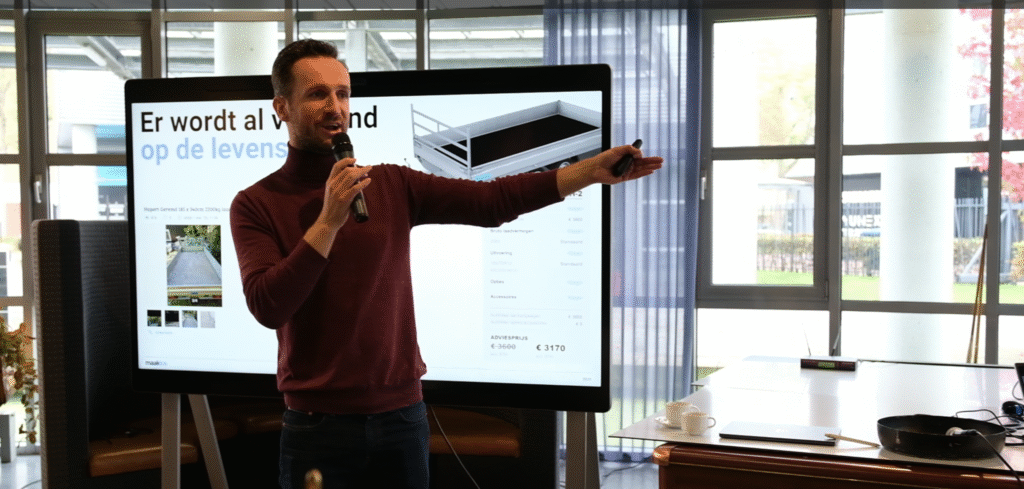
Looking ahead
Throughout the day, a consistent theme emerged: circular electronics demand systems change — in policy, in design, in business logic, and in skills. The Circular Circuits consortium, coordinated by Prof. Arnold Tukker, is half a way through. The event served not only to share outcomes, but to build new bridges between research and implementation.
As one participant summed up during the closing discussion:
“We’ve stopped talking about whether circular electronics are possible. Now the question is how fast we can make them the norm.”
Watch here the impressions from the event.
